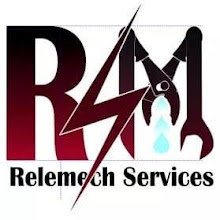Here is a list and brief description of system components you need to successfully install Solar Power Electric System:
100W Solar Panels
1. Panels
Solar panels are the most noticeable component of a residential solar electric system. The solar panels are installed outside the home, typically on the roof and convert sunlight into electricity.
The photovoltaic effect is the process of converting sunlight into electricity. This process gives solar panels their alternate name, PV panels.This rating is the maximum produced by the panel under ideal conditions. Output per panel is between 10 and 300 watts, with 100 watts be a common configuration.
100W Solar Panels
1. Panels
Solar panels are the most noticeable component of a residential solar electric system. The solar panels are installed outside the home, typically on the roof and convert sunlight into electricity.
The photovoltaic effect is the process of converting sunlight into electricity. This process gives solar panels their alternate name, PV panels.This rating is the maximum produced by the panel under ideal conditions. Output per panel is between 10 and 300 watts, with 100 watts be a common configuration.
.jpg) |
| Solar Power Panels |
3. Battery Pack: Solar power systems produce electricity during the daytime, when the sun is shining. Your home demands electricity at night and on cloudy days – when the sun isn’t shining. To offset this mismatch, batteries can be added to the system.
 |
| Battery Rack C/W Batteries |
.jpg) |
| Inverter With Disconnector |
4. DC-to-AC inverters: Inverters take the low-voltage, high-current signals from the PV panels and convert them into 120VAC (or 240 VAC), which is directly compatible with grid power. From a reliability standpoint, they are generally the weak link in any PV system, so quality is a must.
5. Tracking mounts: Tracking mounts mechanically move the PV panels over the course of a day so that they directly face the sun at all times. Dual axis trackers change both azimuth and elevation, while single axis trackers only match the azimuth.
6. Disconnect switches: Disconnect switches are of critical importance, and they need to be mounted within easy reach. Every member of your family should know exactly how to turn the PV system off for safety reasons. If any abnormal behavior occurs in your home's electrical system, shut off the solar system first.
8.Utility power meters: Conventional power meters are capable of spinning backward, but utility companies usually change to a special digital meter when you connect to the grid because most solar customers go to the TOU (time-of-use) rate structure, which requires more intelligent processing than a mechanical device is capable of.
9.Backup Generator
For systems that are not tied to the utility grid, a backup generator is used to provide power during periods of low system output due to poor weather or high household demand. 10.Breaker Panel, AC Panel, Circuit Breaker Panel :The breaker panel is where the power source is joined to the electrical circuits in your home. A circuit is a continuous route of connected wire that joins together outlets and lights in the electric system.
11.Charge Controller: The charge controller – also known as charge regulator – maintains the proper charging voltage for system batteries. Batteries can be overcharged, if fed continuous voltage. The charge controller regulates the voltage, preventing overcharging and allowing charging when required.
 |
| Charge Controllers |
This is all you need to have a complete home solar power system. In our next article, we will share with you more on how to do the actually wiring. Here is a simple illustration of a wire diagram:












